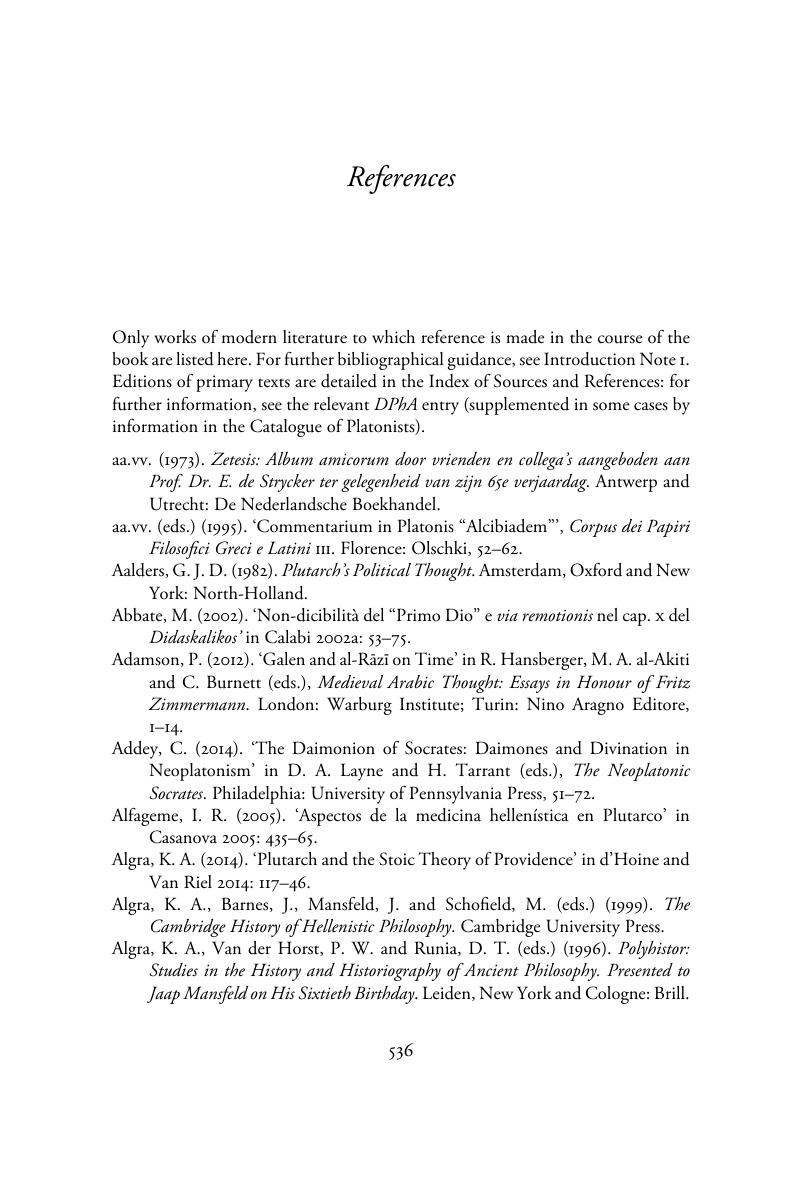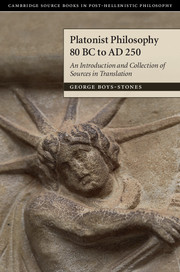Book contents
- Platonist Philosophy 80 bc to ad 250
- Cambridge Source Books in Post-Hellenistic Philosophy
- Platonist Philosophy 80 bc to ad 250
- Copyright page
- Contents
- Acknowledgements
- Abbreviations
- Introduction: Studying Middle Platonism
- Chapter 1 Plato’s Authority and the History of Philosophy
- Chapter 2 Making Sense of the Dialogues
- I Cosmology
- II Dialectic
- III Ethics
- Glossary
- References
- Catalogue of Platonists
- Index of Sources and References
- Index to the Notes and Further Reading
- References
References
Published online by Cambridge University Press: 08 December 2017
- Platonist Philosophy 80 bc to ad 250
- Cambridge Source Books in Post-Hellenistic Philosophy
- Platonist Philosophy 80 bc to ad 250
- Copyright page
- Contents
- Acknowledgements
- Abbreviations
- Introduction: Studying Middle Platonism
- Chapter 1 Plato’s Authority and the History of Philosophy
- Chapter 2 Making Sense of the Dialogues
- I Cosmology
- II Dialectic
- III Ethics
- Glossary
- References
- Catalogue of Platonists
- Index of Sources and References
- Index to the Notes and Further Reading
- References
Summary

- Type
- Chapter
- Information
- Platonist Philosophy 80 BC to AD 250An Introduction and Collection of Sources in Translation, pp. 536 - 592Publisher: Cambridge University PressPrint publication year: 2017



